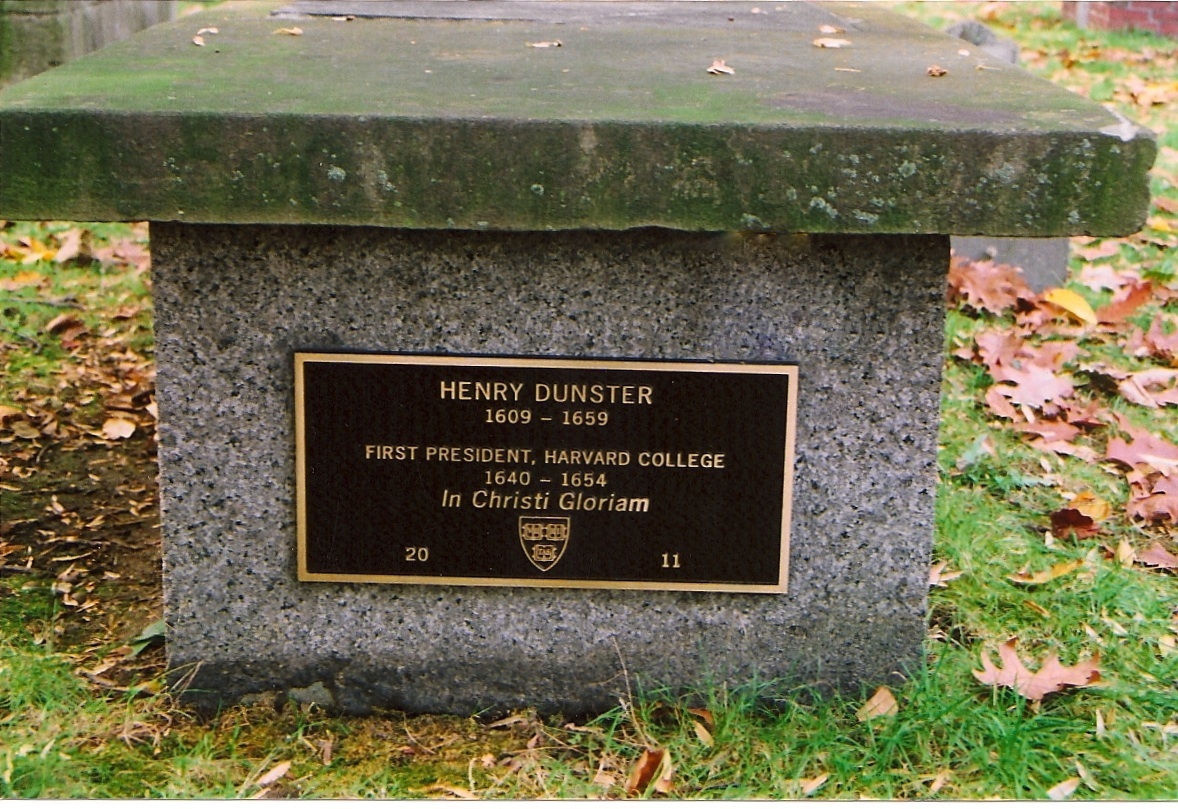
This is Henry Dunster's gravesite in the Old Burying Yard (or Old Burying Ground, "God's Acre"), just a stone's throw away from the main entrance to Harvard University. After his voluntary exile to Scituate, Plymouth Colony, in 1655, it was Dunster's express wish in his will that, after his death, he be buried close to the College that he loved. He ensured that provision was made for his body to be transported from Scituate to Cambridge, there to be interred "by my loveing wife and other relaccons [relations]." Dunster was buried there in 1659.
